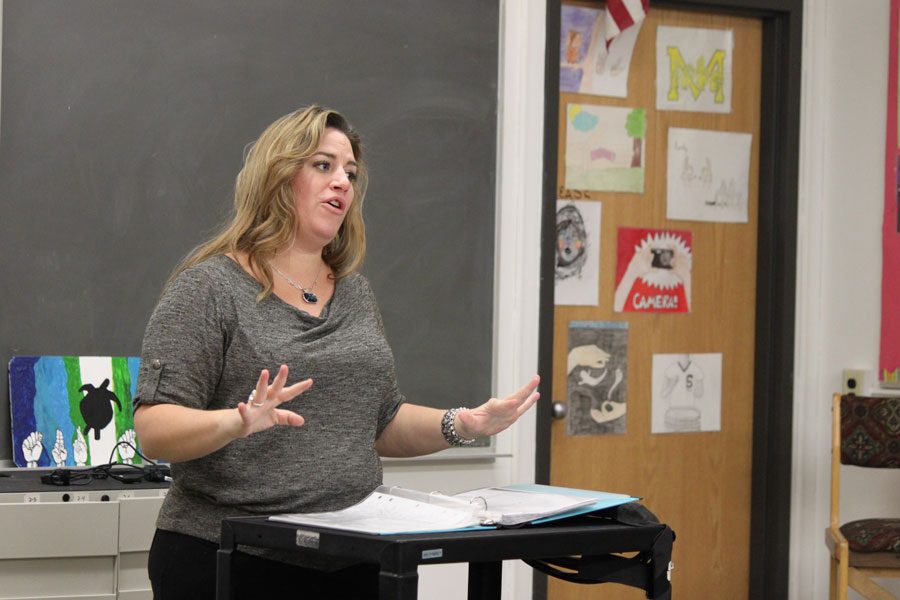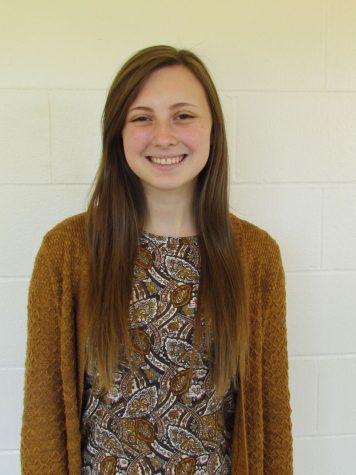American Sign Language becomes part of teacher’s daily life
Maxwell signs “rain” to her ASL 3B students. Sign language heavily depends on facials to relay the emotion of a message.
Jan 18, 2017
Sitting down with her mother at a very young age American Sign Language (ASL) teacher Mrs. Jill Maxwell started learning the basics about sign language by reading the book Ameslan, an introduction to ASL.
Maxwell grew up in what would be considered a different family to society.
Both of Maxwell’s parents were bilingual.
“They were used to people judging their families on how they spoke,” said Maxwell.
Her father comes from an immigrant family descended from Quebec speaking French. However, her mother’s family does not speak; they make a language with their hands using sign language.
Her mother is called a C.O.D.A (child of a deaf adult); a person who was raised by one or more deaf parents while the child is hearing.
“I had an awesome childhood like, ‘Wow other people didn’t grow up like me,’” said Maxwell.
Family gatherings were difficult at first for Maxwell. She did not know what either sides of the family were saying most of the time, and would always have her mom or dad interpret what was said.
Maxwell’s immediate grandparents and others were deaf. A total of 25 people in Maxwell’s family are deaf.
“90 percent of deaf people are born to hearing parents. Only 10 percent are generational like mine,” said Maxwell.
The deaf community in Michigan has gatherings at the Flint Association of the Deaf. They meet to play Euchre, watch sporting events, and host holiday dinners.
“They’re just like everyone else but they don’t hear,” said Maxwell.
Maxwell taught at a Michigan school for the deaf before teaching at Northwest.
“After a while you got tired and craved speaking,” said Maxwell.
A job opened up for ASL at Northwest High School and Maxwell filled in.
From learning how to sign in Ameslan to teaching hundreds of students a day Maxwell has impacted the lives of children.





